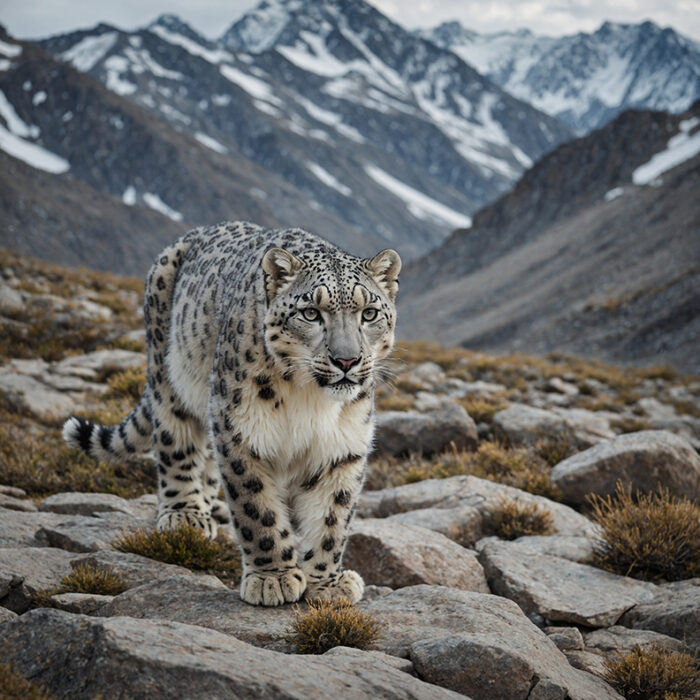October 23 marks International Snow Leopard Day, a significant occasion dedicated to raising awareness for one of the world’s most elusive and vulnerable big cats. According to the International Union for Conservation of Nature (IUCN), the population of snow leopards is estimated to be between 3,500 and 7,000 individuals. These magnificent creatures reside in the rugged terrains of 12 mountainous countries, including Afghanistan, Bhutan, China, Kazakhstan, Kyrgyzstan, India, Mongolia, Nepal, Russia, Pakistan, Tajikistan, and Uzbekistan. Each country presents a unique habitat for the snow leopard, which is adapted to thrive at high elevations, usually between 3,000 and 5,200 meters. These greyish felines are known for their striking coat patterns and remarkable ability to blend into their rocky environments.
Historically, snow leopards have been so elusive that sightings were largely limited to local communities and rarely documented. Their secretive nature, combined with challenging mountainous terrains, made them difficult to observe for researchers and tourists alike. However, advances in wildlife conservation knowledge and practices have led to increased opportunities for visitors to experience these magnificent cats in their natural habitat, particularly in regions like India and Bhutan. The growing interest in snow leopards has also spurred research efforts, leading to better understanding and monitoring of their populations in these areas.
Last year marked a significant milestone for snow leopard conservation in India, as the country conducted its first comprehensive survey of snow leopards, revealing an estimated population of 718 individuals. These figures provide vital data that can help inform conservation strategies and protect these majestic cats. Bhutan, another critical habitat for snow leopards, boasts a population of approximately 134 individuals. In neighboring Nepal, estimates suggest that the snow leopard population ranges from 300 to 500. These numbers underscore the importance of continued efforts and collaboration among these nations to preserve the snow leopard’s fragile ecosystem.
International Snow Leopard Day serves as a rallying point for conservationists to unite and promote awareness about the threats facing snow leopards, including habitat loss, poaching, and declining prey populations. The observance of this day encourages communities and governments alike to take action in protecting these magnificent creatures and their habitats. Various organizations and wildlife enthusiasts participate through educational campaigns, workshops, and community involvement, aiming to foster a collective commitment to snow leopard conservation.
The allure of snow leopards not only captivates wildlife enthusiasts but also highlights the ecological significance of preserving biodiversity in mountainous regions. As apex predators, they play an essential role in maintaining the balance of their ecosystems, influencing the populations of their prey species. Efforts to conserve snow leopards often lead to broader conservation initiatives that benefit other wildlife and local communities, emphasizing the interconnectedness of all species within these fragile ecosystems.
In conclusion, International Snow Leopard Day serves as a powerful reminder of the urgent need to protect these magnificent animals and their habitats. By understanding the challenges they face and rallying support for conservation efforts, we can work towards ensuring that future generations will continue to marvel at the grace and beauty of the snow leopard in the wild. Celebrating this day reinforces the importance of international collaboration, awareness, and action in preserving the legacy of the world’s most elusive big cats.

